2007-03-13 17:17
OOIL Announces Results for 2006
Orient Overseas (International) Ltd (“OOIL”) announced a net profit of US$581.1 million for the year ended 31st December 2006, a decrease of 11% from the net profit of US$651.3 million recorded in 2005. In November 2006, OOIL reached agreement to dispose of its Terminals Division to Ontario Teachers’ Pension Plan. Excluding the result of Terminals Division, the continued operations reported a net profit of US$528.3 million for the year which compares with the US$615.2 million for 2005, decreased by 14%. The Directors are recommending the payment of a total dividend of US92 cents (HK$7.18) per share which is comprised of a final dividend of US12 cents (HK$0.94) and a special dividend of US80 cents (HK$6.24) per ordinary share as a result of the sale of the Group’s Terminals Division in North America.
“2006 was a momentous year for the OOIL Group. Market conditions for container shipping were more difficult than they had been during the three previous years and yet we have still managed to record what I believe to be an impressive result especially when placed in the environment of generally weaker freight rates and steeply rising costs. It benefits however, from a revaluation of our Wall Street Plaza investment property,” said Chairman, Mr. C C Tung.
“Following a strategic review of the businesses, we entered into an agreement on 21st November 2006 with Ontario Teachers’ Pension Plan to sell our Terminals Division to them for a consideration of ca. US$2,400 million, on a debt free basis. The four container terminals in question, Deltaport and Vanterm in the Port of Vancouver and New York Container Terminal and Global Container Terminal in the Port of New York and New Jersey, had never been integral to our container liner operations. OOCL is only responsible for a minority of the throughput of each terminal and contract negotiations have always been conducted together with our Grand Alliance partners on an arm’s length and purely commercial basis. Given this background and the strong conviction following the strategic review, that the Group’s share price had never fairly reflected the true value of these assets, it was decided that we should examine the potential to dispose of them in order to realise this full potential value. Our view was proved to be correct.”
“The total cash proceeds of the transaction amount to US$2,350 million. After payment of the associated tax liability and fees together with the proposed ordinary and special dividends and combined with the Group’s existing cash and near cash holdings, the Group will still hold approximately US$2,800 million in cash and near cash reserves against a total debt of US$2,068 million as at 31st December 2006. The Board is of the opinion that these increased cash resources place the Group in an extremely advantageous position with multiple options open to it in moving forwards.”
“For our Container Transport and Logistics businesses 2005 ended and 2006 began in an almost slough of despond. As has seemed to happen so many times in the past, commentators and forecasters were predicting a very difficult 2006 predicated on a significant disparity between an abnormally high projected supply increase, through an accelerated rate of deployment of new tonnage into all services, and a fall in demand side volume growth as a result of a slowing US economy and its consequent impact upon the remainder of the global economy. On neither side of the equation in the event, did we see these concerns materialise to the extent predicted. However, the annual and seasonal dip in load factors around Chinese New Year were taken to be something they were not and as a result served only to deepen the despondency. Freight rates had been falling and the fall became steeper as a result, most markedly on the Asia to Europe trades. On these routes, for which the tonnage increase was forecast to be proportionately the largest, carriers feared lower cargo volumes throughout the year and as a result were far too ready to accept lower freight rates in the attempt to secure volume. The Chinese New Year dip in load factors proved itself once again to be purely temporary in nature and as the pattern for the year became apparent as vessels rapidly filled up and near 100% load factors became the norm for the remainder of the year. Nevertheless, as bitter experience has taught us too many times in the past, whilst falling very fast, freight rates take many months, if not years, to be restored. Only now is this restoration starting to happen. Our other trades also suffered from this general softening of the market with the exception of our Transatlantic business. All other trades recorded lower profits for 2006 compared with 2005,” said Mr. Tung.
“Our Property Development business contributed only modestly during 2006 to Group profits. As I mentioned in last year’s report, due to the timing of previous land acquisitions and our considered views of the market, property development income would slow dramatically during the two years of 2006 and 2007. The Shanghai residential real estate market continued to be soft during 2006 and due to the timing of the majority of the pipeline projects, the Company had very little stock for sale during the year. While we remain cautious of the potential effects of the various government measures on the residential real estate market, we nevertheless remain confident in the medium and long-term future of Shanghai and its surrounding areas. On the other hand the Shanghai office market continued to be strong in 2006. The underlying supply and demand balance has been the main driver and we expect this to continue through 2007. We continue to hold our 8% interest in Beijing Oriental Plaza and Wall Street Plaza continues to record a solid result within expectations. As at 31st December 2006, Wall Street Plaza was valued at US$200 million. This represents a further US$25 million appreciation in market value over the US$75 million recorded at the interim stage in 2006. The property enjoyed an occupancy rate of 99% for the better part of the year.”
“The end of 2006 and into 2007 has followed much the same path as a year ago. There continues to be significant concern in relation to a forecast oversupply of new tonnage into a weaker demand side volume growth environment. However, the experience of only last year suggests that a number of commentators might be coming around to the adoption of a much more balanced approach and market sentiment at this time this year is more buoyant than at the same time last year for a number of reasons. Better management of the introduction of new tonnage was demonstrated by the carriers last year and it is expected that this will persist through 2007. On the other side of the equation, volumes have generally remained noticeably and unseasonably strong through the traditional slack season over the year end and there is less likelihood of the load factor blips caused by the Chinese New Year factory closures being misinterpreted to the extent that they were last year. And indeed, the year has started well with load factors generally higher than expected and freight rates generally stronger than expected. However, and as always, we must wait to see how this stronger sentiment translates into a movement in freight rates as the year unfolds. The annual round of contract renewals on the Trans-Pacific, the largest of the east-west trades, will be crucial as a demonstration of whether the general direction of freight rate movement has been reversed and we are back into a recovery in the cycle. The US economy has recently been showing remarkable resilience and stability with the slowdown in the housing sector not having had any undue impact on other sectors of the economy. The volumes of furniture and other household items being shipped across the Pacific have softened as a result, but they have been more than compensated for by rising volumes of other cargo categories. Consumer confidence and retail sales have both retained their general levels of strength and give cause for cautious optimism for the year of 2007 as a whole. Nevertheless, rising costs remain a concern. Although bunker prices have come down in line with lower crude oil prices, terminal handling charges continue to rise as a result of both higher costs and the growing scarcity of available capacity. Our greatest concerns, however, relate to intermodal transportation costs and especially the rising costs of rail transportation. Intermodal cargo rates must rise significantly to cover these increasing costs. If they do not then many intermodal destinations in the US will become uneconomic and carriers will have no choice but to refuse cargoes for these inland destinations,” concluded Mr. Tung.
Mr. Nicholas Sims, the Group Chief Financial Officer, said that the Group’s net debt to equity ratio as at 31st December 2006 was 0.33:1, compared with 0.24:1 at end of 2005, as a result of new borrowings incurred against the newbuildings delivered and ordered during the year. It remains one of the Group’s strategic goals to maintain this ratio at a level below 1:1. He also confirmed that sufficient resources had been set aside to ensure that no undue burden is placed upon the Group’s financial position as new vessels are delivered over the next few years. “Indeed, the Group’s balance sheet and financial position get ever stronger and place the Group advantageously for the future,” he commented.
OOIL owns one of the world’s largest international integrated containerised transportation businesses and trades under the name OOCL. Its investments are principally in international containerised transportation, logistics, container terminal operations, commercial property in New York, business interests in the People’s Republic of China and portfolio investment securities. With more than 160 offices in 50 countries the Group is one of Hong Kong’s most international of businesses. OOIL is listed on The Stock Exchange of Hong Kong Limited.
“2006 was a momentous year for the OOIL Group. Market conditions for container shipping were more difficult than they had been during the three previous years and yet we have still managed to record what I believe to be an impressive result especially when placed in the environment of generally weaker freight rates and steeply rising costs. It benefits however, from a revaluation of our Wall Street Plaza investment property,” said Chairman, Mr. C C Tung.
“Following a strategic review of the businesses, we entered into an agreement on 21st November 2006 with Ontario Teachers’ Pension Plan to sell our Terminals Division to them for a consideration of ca. US$2,400 million, on a debt free basis. The four container terminals in question, Deltaport and Vanterm in the Port of Vancouver and New York Container Terminal and Global Container Terminal in the Port of New York and New Jersey, had never been integral to our container liner operations. OOCL is only responsible for a minority of the throughput of each terminal and contract negotiations have always been conducted together with our Grand Alliance partners on an arm’s length and purely commercial basis. Given this background and the strong conviction following the strategic review, that the Group’s share price had never fairly reflected the true value of these assets, it was decided that we should examine the potential to dispose of them in order to realise this full potential value. Our view was proved to be correct.”
“The total cash proceeds of the transaction amount to US$2,350 million. After payment of the associated tax liability and fees together with the proposed ordinary and special dividends and combined with the Group’s existing cash and near cash holdings, the Group will still hold approximately US$2,800 million in cash and near cash reserves against a total debt of US$2,068 million as at 31st December 2006. The Board is of the opinion that these increased cash resources place the Group in an extremely advantageous position with multiple options open to it in moving forwards.”
“For our Container Transport and Logistics businesses 2005 ended and 2006 began in an almost slough of despond. As has seemed to happen so many times in the past, commentators and forecasters were predicting a very difficult 2006 predicated on a significant disparity between an abnormally high projected supply increase, through an accelerated rate of deployment of new tonnage into all services, and a fall in demand side volume growth as a result of a slowing US economy and its consequent impact upon the remainder of the global economy. On neither side of the equation in the event, did we see these concerns materialise to the extent predicted. However, the annual and seasonal dip in load factors around Chinese New Year were taken to be something they were not and as a result served only to deepen the despondency. Freight rates had been falling and the fall became steeper as a result, most markedly on the Asia to Europe trades. On these routes, for which the tonnage increase was forecast to be proportionately the largest, carriers feared lower cargo volumes throughout the year and as a result were far too ready to accept lower freight rates in the attempt to secure volume. The Chinese New Year dip in load factors proved itself once again to be purely temporary in nature and as the pattern for the year became apparent as vessels rapidly filled up and near 100% load factors became the norm for the remainder of the year. Nevertheless, as bitter experience has taught us too many times in the past, whilst falling very fast, freight rates take many months, if not years, to be restored. Only now is this restoration starting to happen. Our other trades also suffered from this general softening of the market with the exception of our Transatlantic business. All other trades recorded lower profits for 2006 compared with 2005,” said Mr. Tung.
“Our Property Development business contributed only modestly during 2006 to Group profits. As I mentioned in last year’s report, due to the timing of previous land acquisitions and our considered views of the market, property development income would slow dramatically during the two years of 2006 and 2007. The Shanghai residential real estate market continued to be soft during 2006 and due to the timing of the majority of the pipeline projects, the Company had very little stock for sale during the year. While we remain cautious of the potential effects of the various government measures on the residential real estate market, we nevertheless remain confident in the medium and long-term future of Shanghai and its surrounding areas. On the other hand the Shanghai office market continued to be strong in 2006. The underlying supply and demand balance has been the main driver and we expect this to continue through 2007. We continue to hold our 8% interest in Beijing Oriental Plaza and Wall Street Plaza continues to record a solid result within expectations. As at 31st December 2006, Wall Street Plaza was valued at US$200 million. This represents a further US$25 million appreciation in market value over the US$75 million recorded at the interim stage in 2006. The property enjoyed an occupancy rate of 99% for the better part of the year.”
“The end of 2006 and into 2007 has followed much the same path as a year ago. There continues to be significant concern in relation to a forecast oversupply of new tonnage into a weaker demand side volume growth environment. However, the experience of only last year suggests that a number of commentators might be coming around to the adoption of a much more balanced approach and market sentiment at this time this year is more buoyant than at the same time last year for a number of reasons. Better management of the introduction of new tonnage was demonstrated by the carriers last year and it is expected that this will persist through 2007. On the other side of the equation, volumes have generally remained noticeably and unseasonably strong through the traditional slack season over the year end and there is less likelihood of the load factor blips caused by the Chinese New Year factory closures being misinterpreted to the extent that they were last year. And indeed, the year has started well with load factors generally higher than expected and freight rates generally stronger than expected. However, and as always, we must wait to see how this stronger sentiment translates into a movement in freight rates as the year unfolds. The annual round of contract renewals on the Trans-Pacific, the largest of the east-west trades, will be crucial as a demonstration of whether the general direction of freight rate movement has been reversed and we are back into a recovery in the cycle. The US economy has recently been showing remarkable resilience and stability with the slowdown in the housing sector not having had any undue impact on other sectors of the economy. The volumes of furniture and other household items being shipped across the Pacific have softened as a result, but they have been more than compensated for by rising volumes of other cargo categories. Consumer confidence and retail sales have both retained their general levels of strength and give cause for cautious optimism for the year of 2007 as a whole. Nevertheless, rising costs remain a concern. Although bunker prices have come down in line with lower crude oil prices, terminal handling charges continue to rise as a result of both higher costs and the growing scarcity of available capacity. Our greatest concerns, however, relate to intermodal transportation costs and especially the rising costs of rail transportation. Intermodal cargo rates must rise significantly to cover these increasing costs. If they do not then many intermodal destinations in the US will become uneconomic and carriers will have no choice but to refuse cargoes for these inland destinations,” concluded Mr. Tung.
Mr. Nicholas Sims, the Group Chief Financial Officer, said that the Group’s net debt to equity ratio as at 31st December 2006 was 0.33:1, compared with 0.24:1 at end of 2005, as a result of new borrowings incurred against the newbuildings delivered and ordered during the year. It remains one of the Group’s strategic goals to maintain this ratio at a level below 1:1. He also confirmed that sufficient resources had been set aside to ensure that no undue burden is placed upon the Group’s financial position as new vessels are delivered over the next few years. “Indeed, the Group’s balance sheet and financial position get ever stronger and place the Group advantageously for the future,” he commented.
OOIL owns one of the world’s largest international integrated containerised transportation businesses and trades under the name OOCL. Its investments are principally in international containerised transportation, logistics, container terminal operations, commercial property in New York, business interests in the People’s Republic of China and portfolio investment securities. With more than 160 offices in 50 countries the Group is one of Hong Kong’s most international of businesses. OOIL is listed on The Stock Exchange of Hong Kong Limited.
많이 본 기사
- 야권 안전운임제 재도입 추진…정부·수출기업 난색캐나다 항만 파업 심화…西밴쿠버·東몬트리올 봉쇄수요 강세에 컨운임지수 3주 연속 상승…동남아 두자릿수↑부산신항웅동개발, 현대글로비스에 웅동지구 2단계 물류부지 공급KSS해운, 3분기 영업익 280억…31%↑국내 건설사, 베트남 하이퐁에 복합물류센터 건설스마트 보세운송 신고·관리서비스로 항만물류 활성화 힘 보탠다대선조선, 그리스 선사에 1000TEU급 컨테이너선 1척 인도中 상하이항, 올해 9개월 컨처리량 3910만TEU ‘역대최대’“입거수리 영향” 대한해운, 3분기 영업익 9% 감소한 678억원
- 정기선 HD현대 부회장, 1년만에 수석부회장 승진BDI 1692포인트…중대형선 시장서 물동량 강세 이어가프랑스 CMA CGM, 3분기 순이익 3.8조…전년比 7배↑광양 율촌산단에 친환경 선박 전문화 공장 세운다BPA-해수부, ‘해외물류센터’로 중소·중견기업 수출 돕는다IPA, 컨터미널 운영사와 내년 운영 방향 청사진 공유UPA·화주물류협의회·탱크터미널협의회, 물동량 증대 방안 모색YGPA 박성현 사장, ‘아동학대 예방’ 릴레이 참여CJ대한통운, 美 조지아 콜드체인 물류센터 개소…시장 공략 가속화에어프레미아, ‘연말특수 겨냥’ 인천-뉴욕노선 주 6회로 증편





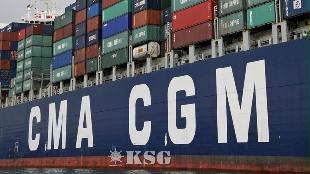

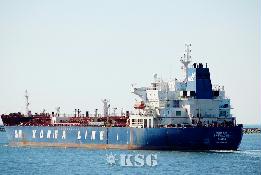
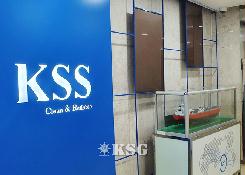
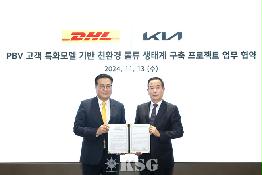
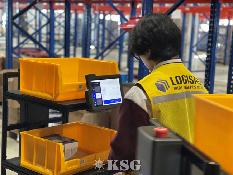
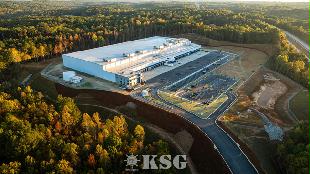
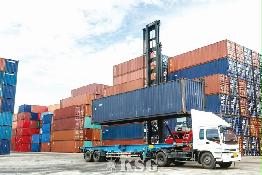
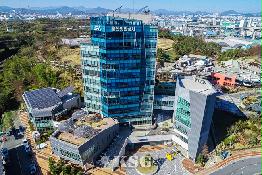
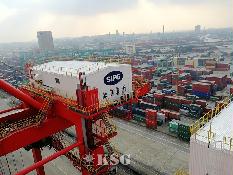
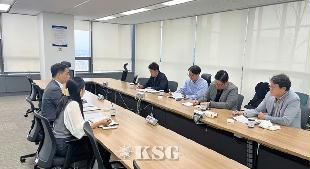
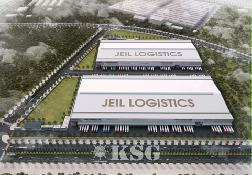
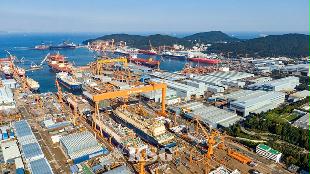


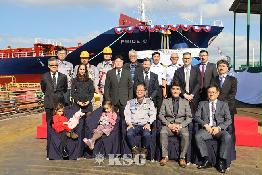
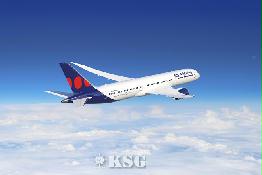
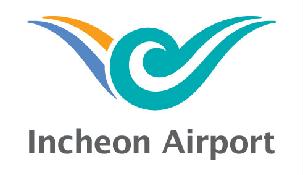
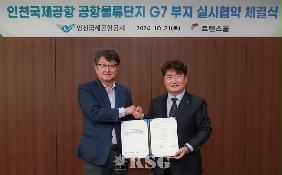

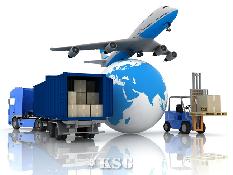

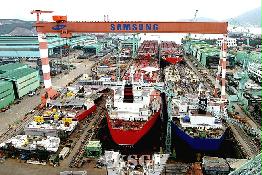


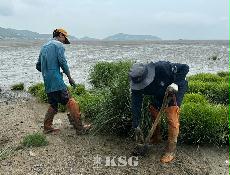



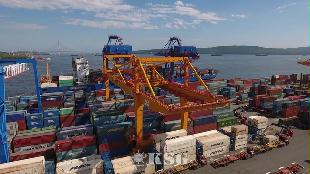
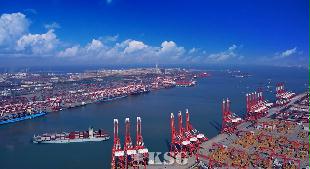

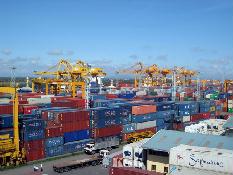






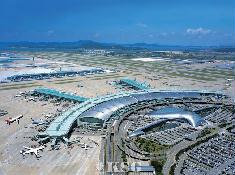
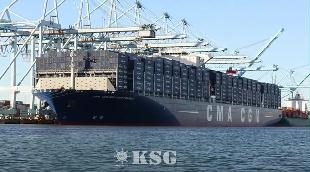
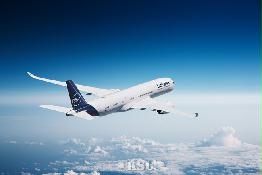
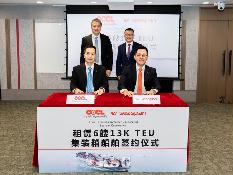
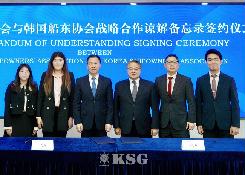





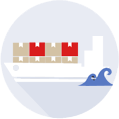
















0/250
확인